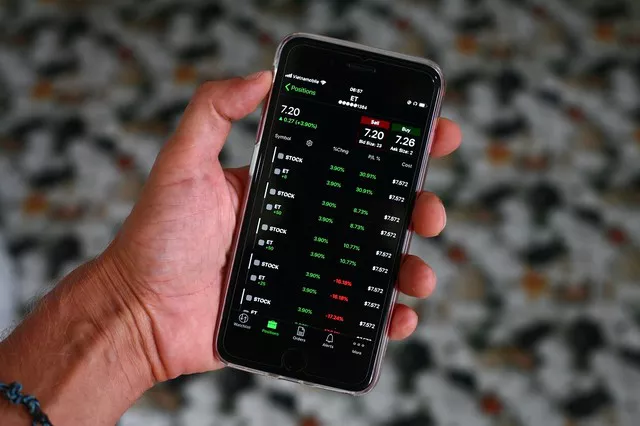Futures trading is a dynamic financial market that offers opportunities for traders to profit from the price movements of various assets, including commodities, currencies, and financial instruments. While the potential for profit is enticing, futures trading is not without risks. To succeed in this market, traders must employ effective strategies and risk management techniques.
Understanding the Basics of Futures Trading
Before diving into strategies for profitable futures trading, it’s crucial to grasp the fundamentals. Futures contracts are standardized agreements to buy or sell a specific quantity of an underlying asset at a predetermined price and date in the future. These contracts can be based on a wide range of assets, from agricultural commodities to financial instruments. To succeed in futures trading, you must have a deep understanding of the mechanics, contract specifications, and market participants.
Risk Management: The Cornerstone of Profitable Futures Trading
Risk management is the bedrock of successful futures trading. It involves setting clear risk parameters, such as stop-loss orders, position sizing, and diversification. Traders should never risk more capital than they can afford to lose. Additionally, it’s essential to have a well-defined risk-reward ratio for each trade, which helps maintain a profitable trading strategy over the long term.
Choosing the Right Broker and Platform
Selecting a reliable futures broker and trading platform is a critical step in your trading journey. Look for brokers with competitive commission rates, a wide range of tradable assets, and advanced trading tools. The platform you choose should be user-friendly, offer real-time data, and provide essential features for technical and fundamental analysis. Conduct thorough research and choose a broker that aligns with your trading goals.
Technical Analysis for Futures Trading
Technical analysis involves studying price charts and using various indicators and patterns to forecast future price movements. Successful futures traders often rely on technical analysis to make informed trading decisions. It’s essential to become proficient in chart analysis, recognize key support and resistance levels, and use technical indicators like moving averages, Relative Strength Index (RSI), and MACD to identify entry and exit points.
Fundamental Analysis in Futures Trading
Fundamental analysis focuses on the underlying factors that influence the prices of the assets you’re trading. In the futures market, this can include economic data, supply and demand factors, geopolitical events, and weather patterns (for commodities). Traders who employ fundamental analysis study these factors to make informed decisions about when and what to trade.
Trading Strategies for Futures Markets
Various trading strategies can be employed to profit in the futures market. These include day trading, swing trading, trend following, and scalping. Each strategy has its own set of rules and time frames, and it’s essential to choose one that aligns with your risk tolerance, schedule, and market conditions.
Backtesting and Simulation
Backtesting and simulating your trading strategies are essential steps in the path to profitability. By backtesting, you can analyze how your strategy would have performed in the past, which can provide valuable insights and help fine-tune your approach. Simulated trading allows you to practice and gain experience without risking real capital. Both processes are crucial for refining your strategy.
Position Sizing and Leverage Management
Proper position sizing is a key element of profitable futures trading. It involves determining the size of your positions relative to your account size and risk tolerance. Additionally, futures trading often involves leverage, which can amplify both gains and losses. Effective leverage management is essential to prevent excessive risk-taking and potential account wipeouts.
Monitoring and Adapting to Market Conditions
Futures markets can be highly dynamic and subject to rapid changes. Staying updated on market news and conditions is crucial for making timely decisions. Be prepared to adapt your strategy in response to changing market dynamics and emerging trends.
Psychological Discipline
Emotional discipline is often the most challenging aspect of profitable futures trading. Fear and greed can lead to impulsive decisions and losses. Successful traders maintain a calm and rational mindset, adhere to their trading plans, and avoid emotional trading. Developing emotional discipline takes practice, but it is an essential skill for long-term success.
Risk of Overtrading and Burnout
Overtrading can be a major pitfall for futures traders. When the desire for quick profits leads to frequent trading, it can result in significant losses and burnout. To remain profitable, set trading limits, avoid chasing the market, and take breaks when necessary to prevent overtrading.
Continuous Learning and Education
Futures markets are continually evolving, and there is always something new to learn. Engage in ongoing education by attending seminars, webinars, and reading books on trading. Stay connected with other traders to exchange ideas and strategies, and be open to adapting your approach as you gain experience.
Conclusion
Profitable futures trading requires a combination of knowledge, discipline, and a well-defined strategy. It’s essential to understand the basics, manage risk effectively, and choose the right tools and platforms. Employ technical and fundamental analysis, test and refine your strategies, and practice sound position sizing and leverage management. While the futures market can be challenging, success is attainable for those who approach it with a clear plan, continuous learning, and emotional discipline. By adhering to these principles, you can increase your chances of making a profit in futures trading and achieve your financial goals.


